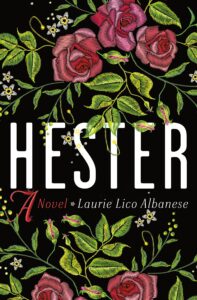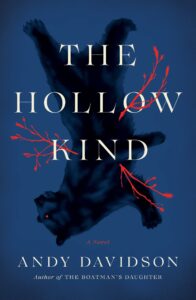October is a strange month around Crime Reads HQ, Canadian division. In my usual sorting of the galleys by month it was a hefty stack, but not that many domestic thrillers were in the stack or in the mix. I found more—there are always more books—but it does make me wonder if the future of the thriller is not as domestic as it used to be. As the world’s incursions into our safe spaces has become impossible to ignore and difficult to figure out, or to make into plot. But that doesn’t mean people have stopped trying to make meaning from all of this, including me.

Laurie Lico Abanese, Hester
(St. Martin’s)
I’m always torn about prequels to a book or movie that has made a mark in me. Isn’t the point of, say, The Scarlet Letter that Nathaniel Hawthorne manages to communicate much more about his characters and their situation than just the despondent Hester Prynne and her unfortunate branding. It can be fun, though, to see what fertile minds can add to a classic, and Albanese proves she has insight into the domestic suspense aspect of Letter and its context. She surveys Colonial Massachusetts through the eyes of an immigrant whose friendship with Hawthorne becomes a minor scandal, but Hawthorne’s world and Hester’s world are both wildly intolerant of relationships between men and women that don’t fit into the usual: either marriage or family. I can’t say this is a substitute for Hawthorne’s classic but it’s an interesting take on life in the New England colonies.

Christopher M. Hood, The Revivalists
(Harper)
The Revivalists is the pandemic book I couldn’t have predicted but my short-sightedness just proves we are going to be under the spell of some very interesting (and frightening, and original, and depressing) fiction for the next few years or longer. Hood’s debut is a chronicle of Bill and Penelope, who were lucky enough to survive the Shark Flu—a result of the melting of Icelandic permafrost. But their daughter, Hannah, has weathered the pandemic in Bishop, California, and she just might have joined a cult. On their cross-country road trip, Bill and Pen will reckon with a new world while they chase what’s most precious: their errant child.

Claudia Lux, Sign Here
(Berkley)
Sign Here made me miss The Good Place—an unfair comparison, as the Good Place ranks very high for me, but a valid one. Sign Here also outlines an afterlife where the residents are functionaries, responsible for recruiting wayward, bumbling live people into the ranks of the population of hell. There is a point system which rewards recruiters for swooping up multi-generational family members, and Peyote Trip (called Pey) is pretty good at his job in the Deals department. But when his plans to convert the Harrison family start to go awry, he enlists the help of an eager new co-worker, Calamity, to help on his quest. But both Earth and Hell contain secrets Pey will have to divine in order to make his plan a reality.

Andy Davidson, The Hollow Kind
(MCD)
I’m slightly wary of ghost stories these days—I can’t let myself think about the consequences of the gothic, about home being a scary or hostile place. But here in what we hope are the trailing days of the pandemic the gothic is making a big resurgence. The Hollow Kind is one of many books in the spooky, isolated house vein (see recent books by Carol Goodman and Ruth Ware, eg). The protagonists in Hollow Kind are a mother and child who need to get away from her abusive husband. A sudden inheritance of said spooky house seems a godsend until the house turns, well, evil. People, never look a gift house in the mouth.

Val McDermid, 1989
(Atlantic Monthly Press)
OK, we can argue all you want about the innovative structure veteran McDermid has chosen for this series, but I think it’s genius. In writing an installment about her newspaper reporter-protagonist, Allie Burns, every ten years. In 1979, we met Allie and followed her through the confusion and hazing of a novice reporter. Ten years on, there is plenty to keep her busy—the aftermath of the crash of Pan Am Flight 103, a hot story about HIV/AIDS, and the descent of papers like hers into lurid tabloids. It’s hard not to like a McDermid book, and she’s made Burns much more likable and complex in this outing. Bring on 1989!

















